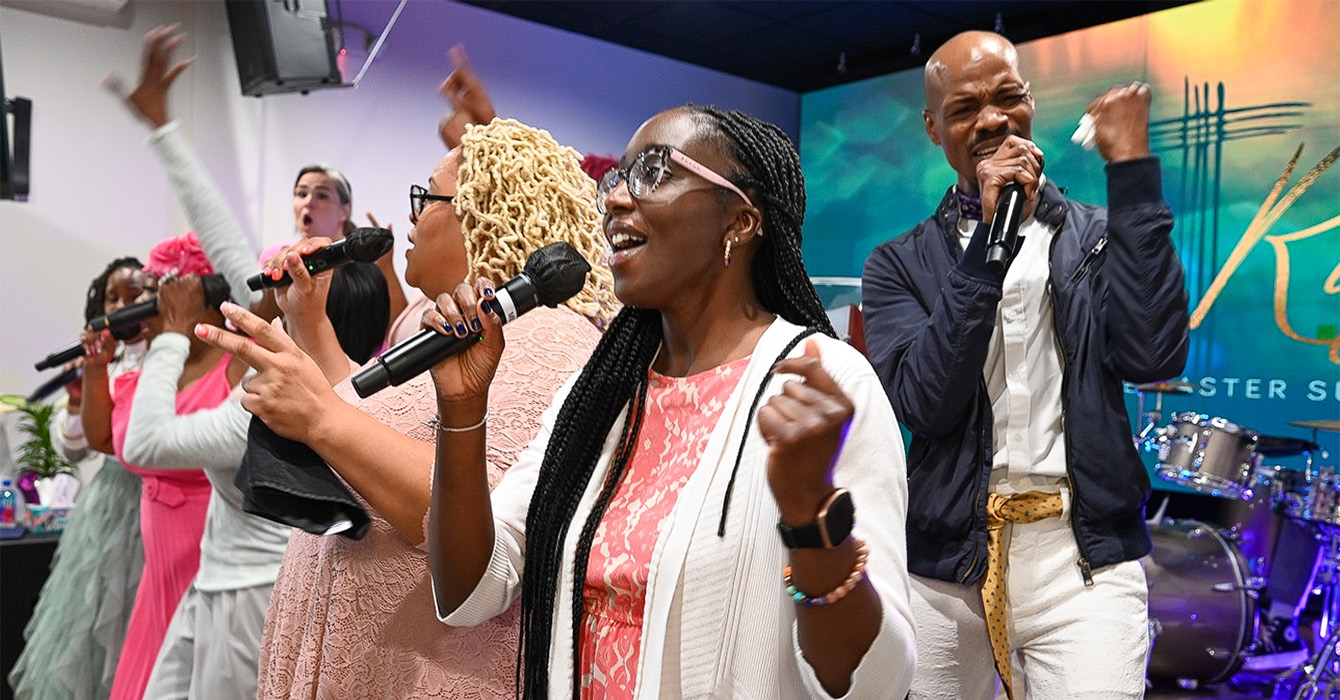I was raised on the Puritan work ethic — a theological framework that places religious importance on one’s work, strongly valuing productivity and frugality.
I well knew the wisdom from Proverbs 6 challenging the “sluggard” to learn from the ant’s industry lest “a little sleep, a little slumber, ... and poverty will come on you like a thief” (Proverbs 6:6-11 NIV). I was a quick study and learned to work with speed and efficiency in order to be as productive as possible.
Then I started working for a church.
At first, I thought it was just me. Perhaps I wasn’t working hard enough. Or maybe I didn’t have the right skills. Eventually, I learned that time functions differently in the church: decisions regularly require a committee, and volunteers move at a different pace than full-time staff.
Perhaps the ant is not always the best teacher.
About three years ago, I made friends with an elderly neighbor who offered me a delightful tour of her yard. I admired her Japanese maple so much that she insisted I dig up a volunteer to take home. I protested that I lived in a second-floor apartment and wasn’t exactly in the right stage of life to be growing a tree. She assured me that it would grow slowly and very happily in a pot.
I dutifully planted my tree, and there it sat with its three little leaves. In the fall, the three leaves turned yellow; in the winter, they fell off. The following spring, three new leaves emerged. It went on this way for about two years. Unlike my zucchini plants dramatically begging for water, the tree sat looking neither happy nor sad nor really much different at all.
Until this spring.
Out of what seemed like nowhere, my twig with leaves decided to grow. Its height doubled; its branches multiplied. A generous soul might even call it bushy now.
In my work as associate director for Thriving Congregations, I regularly talk with project leaders who help congregations as they strive to become more contextually responsive and missionally aligned. Again and again, they tell me, “Change is coming more slowly than we expected.”
Project leaders wrestle with what kind of support over what timeline is best. Congregations hesitate to commit to something that could take longer than one or two years. Yet it can take 12 months for a congregation to fully engage in change work, 14 to 15 months for them to hit their stride, and around five years to change their church’s culture.
This slowness to change isn’t because pastors and congregations don’t care. It’s not because the project leader isn’t working hard enough or doesn’t have the right training. It’s not a lack of funds or faith. Congregations simply change slowly.
Dave Odom, LEADD’s executive director, has written elsewhere that it generally takes three years to establish a new program, seven years for the impact to become visible, and 15 years for an organization to complete a cycle of change. Projects that started during the pandemic will likely take even longer.
Understanding this pace of change, leaders can support congregations by encouraging a process-focused (rather than task-focused) mindset. Some of the project directors I work with have become more intentional about celebrating small wins and helping congregations recognize growth so they don’t get discouraged. They know that when a congregation views itself as a learning congregation, it is more likely to embrace a new initiative as one step in a lifelong journey.
Another helpful approach is to normalize the challenge of change. One project uses the image of a flying trapeze artist and asks congregations to identify where they are on the change journey. Are they standing on the platform getting ready to take the leap? Are they flying through the air, clearly launched but unsure of what the landing will be like? Each step is part of the process, and project leaders assure congregations that their coaches are ready to catch them on the other side.
Recognizing that congregational change is a long-term endeavor means that those leading these change efforts also need to cultivate their own care practices. This is no Holy Week sprint. Rest cannot be postponed until the work is complete. As others have written, the practices of care include good work habits, rest and reflection, and supportive relationships.
This spring, my husband and I traveled to see the solar eclipse. We squinted through our eclipse glasses the moment it began. After a few minutes, my husband announced it was time to find a bathroom. I was shocked. We had driven all this way, claimed our places early, eaten our snacks, read our books, and now — now as the main event was beginning — we were going to take a bio break?
But he knew something I did not. The first stage of the eclipse moves slowly. Looking up only occasionally and paying attention to other changes around us — the shifting shadows, the startling cool breeze — was actually the best way to see the eclipse unfold. Change was happening; I just had to know where to look.
When the moment of totality approached, my surroundings no longer gave me the indicators I needed. Peering through my glasses, I saw that the sun was almost completely covered. Yet when I took them off and looked around, the day appeared only marginally dimmer. Only in the last few seconds did day suddenly transform into night. If I hadn’t been watching the moon, I would have guessed that the change had come with a valiant final push rather than an hour of slow but steady progress. Once again, it mattered where I was looking.
I don’t think the wisdom of Proverbs 6 was wrong to send me to the ant. The author just stopped looking at nature too soon. In the spirit of Proverbs 26:4-5, where the author offers contradictory wisdom in successive verses, I humbly submit these teachings that I have crafted as co-instructor with the ant.
Go to the tree, you tender of congregations;
consider her ways and be wise!
She does not spring up quickly,
only to be scorched and wither because she has no roots.
No, she takes her time,
sending her roots all the way to the stream.
Though her work is slow and unseen,
at the proper time, she bears fruit.
Go to the moon, you nurturer of Christ’s church;
consider her ways and be wise!
Though the lesser light, she does not despair;
she does not worry over what she lacks.
Instead, she remains a faithful witness,
moving steadily until she reaches the sun itself.
At first, she seems to make no difference;
the force opposite her seems too strong.
Then all at once, the sum of her work is beheld:
The majestic darkness descends
as the creatures of the Earth catch their breath in wonder.
Again and again, they tell me, “Change is coming more slowly than we expected.”



















